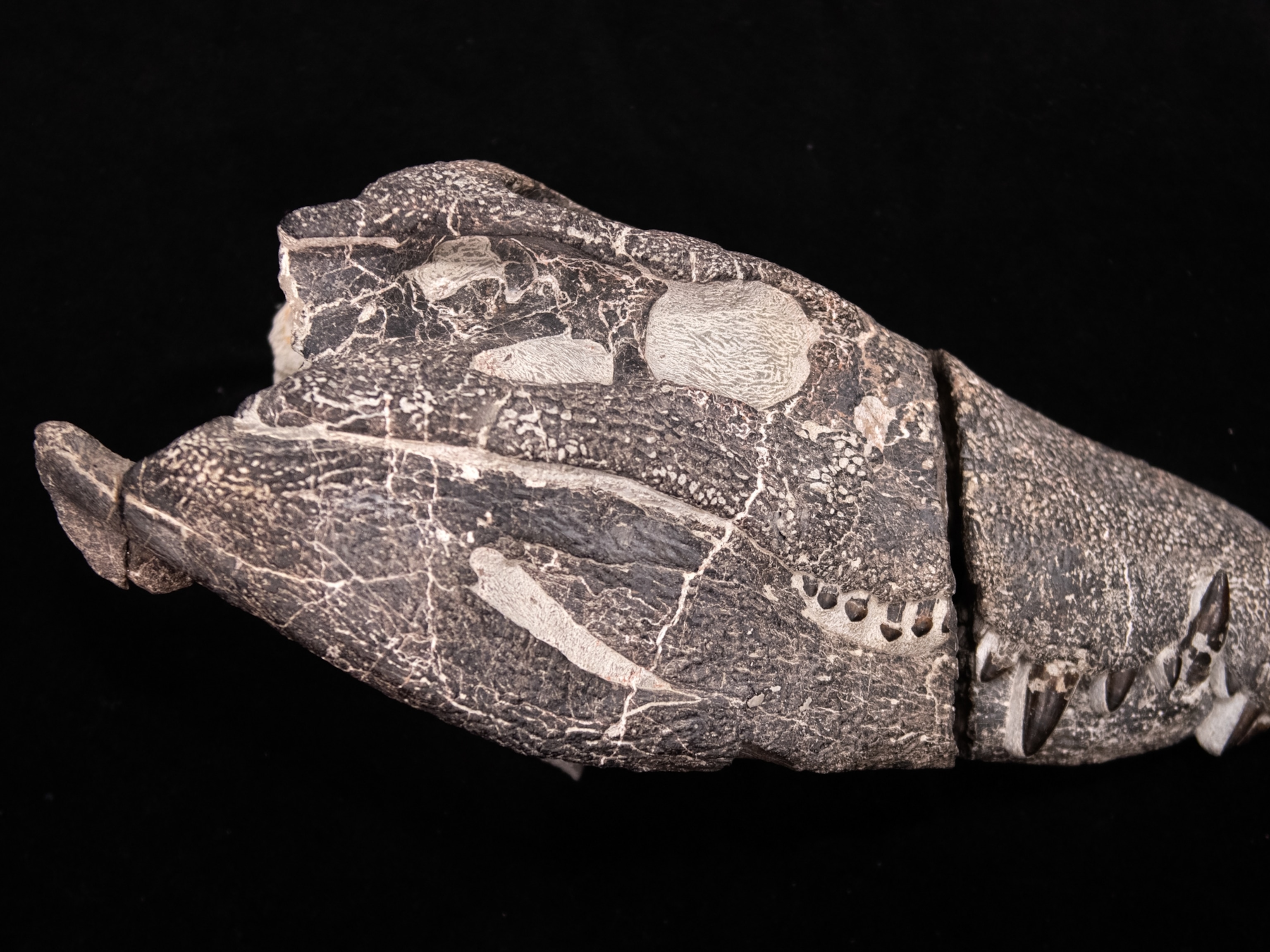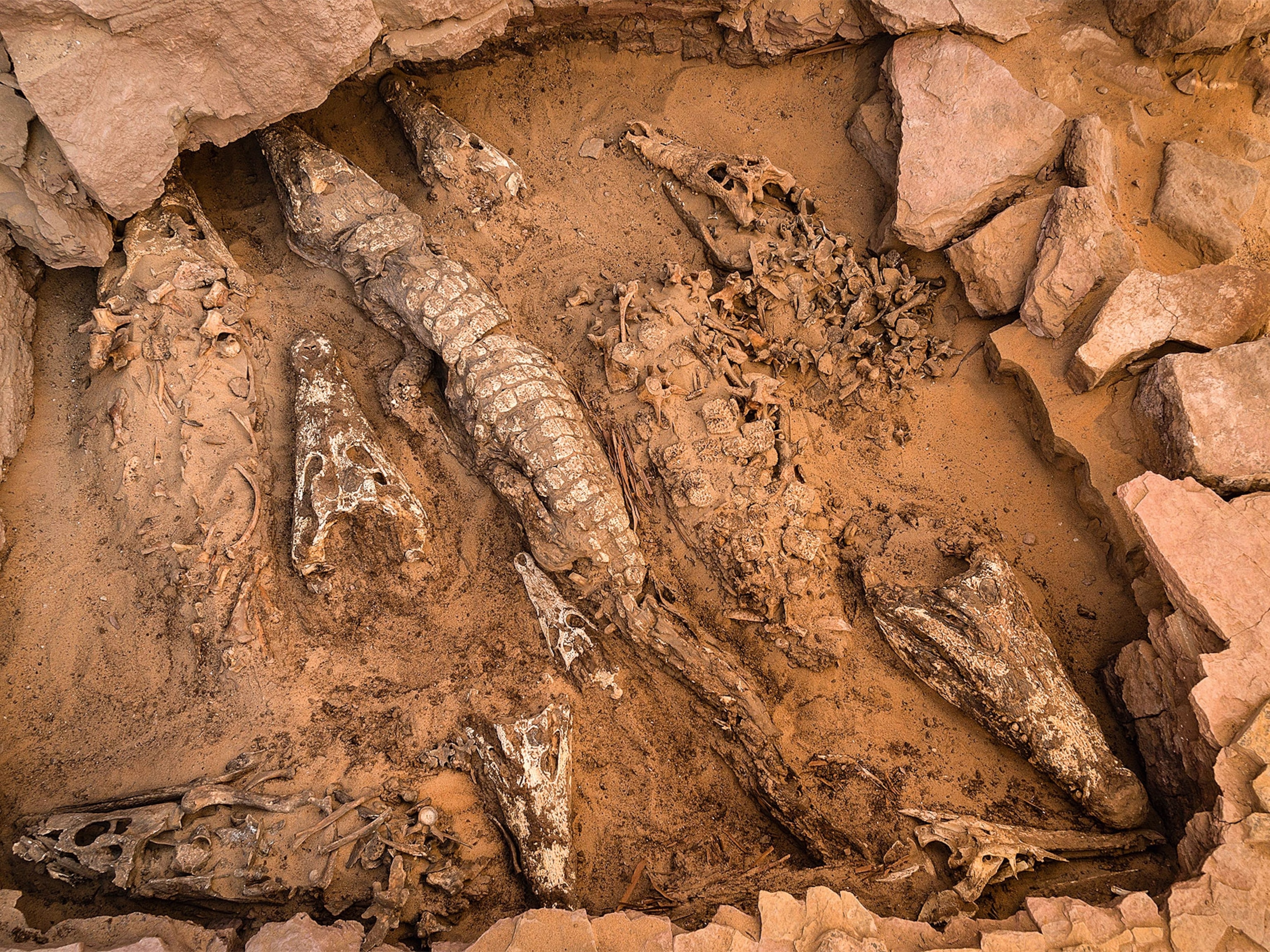
Croc Jaws More Sensitive Than Human Fingertips
"Amazing" bumps on alligators and crocodiles are almost immeasurably touchy.
They may be lethal, leathery, and literally armored to the teeth, but crocodiles and alligators, it turns out, are sensitive types. Their snouts, in fact, are even more touch-sensitive than human fingertips, a new study says.
Part of the crocodilian reptile order, alligators have some 4,000 of tiny, raised black spots, or domes, on their heads, particularly along their jaws, inside their mouths, and between their teeth. Crocodiles have a similar setup, plus a liberal sprinkling over the rest of their bodies, bringing their total to about 9,000.
Scientists have known about these bumps—called integumentary sensory organs, or ISOs—for more than a century. But for a long time their purpose was a mystery.
Perhaps, some biologists suggested, the domes have a waterproofing purpose. Or maybe they detect faint electrical fields given off by prey—or salt, to alert crocs to unsafe drinking water.
In 2002 an alligator study seemed to crack the mystery. Croc dots, it revealed, could detect ripples from even a single drop of water-and therefore even very weak prey movements. (See "Rare Pictures: Crocodile Attacks Elephant.")
Until now, though, a couple of big questions continued to intrigue scientists: How did the domes work—and just how sensitive are they?
Feeling the Unfeelable
Vanderbilt University student Duncan Leitch took it upon himself to solve the mysteries. The results of his croc research appear today in a Journal of Experimental Biology report coauthored with his advisor, biologist Ken Catania.
After taking a croc-handling course (pro tip: poke an unruly croc on the nose—especially sensitive due to those dots), Leitch ordered relatively small alligators from refuges and crocodiles from commercial breeders.
Video: Duncan Leitch Working With Crocs
Examining domes on 18 American alligators and 4 Nile crocodiles, he found that the spots contained touch receptors tuned specifically to pressure and vibration, plus a host of raw nerve endings. (Related: "Crocodiles Have Strongest Bite Ever Measured, Hands-on Tests Show.")
The domes didn't respond to salt or electricity, but they did respond to the touch of von Frey filaments—hairlike, standardized wires used to gauge sensation levels. In fact, some of the domes turned out to be so sensitive they could detect pressures too small to measure via the filaments.
"My professor and I didn't believe at first that they could be that reactive," Leitch said. "We closed our eyes and tried to tickle each other with [the filaments] on our fingertips, and neither of us could even feel it."
Later, using croc carcasses, the researchers stained the dome nerves with dye and traced them back to the brain. They turned out to be tied into a system stemming from the trigeminal nerve—associated with biting, chewing, and swallowing. Go figure.
(Pictures: Biggest Crocodile Ever Caught?)
Why So Touchy?
The new croc-sensitivity study "is really valuable," said Kent Vliet, co-chair of the Association of Zoos & Aquariums' Crocodilian Advisory Group.
"This was exactly what I had hoped somebody would do with ISOs, in terms of really looking at the distribution and the electrophysiology, because that's really the way to answer these questions about function in a tiny sense organ like this."
But why would alligators and crocodiles need such supersensitive skin? Leitch has his suspicions.
He's certain the animals use their mouths to feel for and snap up food (he videotaped crocodiles doing exactly that).
And mother crocodilians also use their mouths to help their young out of their shells and to hold the offspring between their jaws for protection. "That definitely would require a great deal of sensitivity," he said.
(Also see "Robot Revolution: New Material Sensitive as Human Skin.")
Future studies, Leitch hopes, will map out how the bumps' sensations are represented in the reptiles' brains—and perhaps uncover why crocodiles have bumps on their whole bodies, whereas on alligators, only the snouts have domes.
And, given his apparently undiminished enthusiasm, he may be just the guy to find out.
"What's interesting to me is that such a scaly animal, one that's so heavily armored, could have a sensitivity that rivals or surpasses our tactile abilities," Leitch said. "But they have all these little tactile areas that are so exquisitely sensitive—it seems really amazing."




